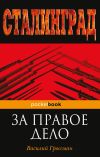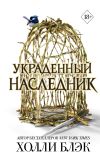Текст книги "Актуальные вопросы филологической науки XXI века"

Автор книги: Авторов Коллектив
Жанр: Языкознание, Наука и Образование
сообщить о неприемлемом содержимом
Текущая страница: 11 (всего у книги 42 страниц)
6. Современный политологический словарь / под ред. В. И. Даниленко. М.: Nota Bene, 2000. 1016 с.
7. Харламова Т. В. Политический дискурс как отражение общественных процессов // Романо-германская филология. Вып. 4. Саратов, 2004. С. 240–245.
8. Черепанова И. Ю. Заговор народа. Как создать сильный политический текст. М.: КСП+, 2002. 464 с.
М. О. Смотрина
PHRASEOLOGICAL UNIT TRANSFORMATION: THE REVIVAL OF FOSSILIZED LEXICAL ITEMS
Научный руководитель: Е. В. Жучкова, кандидат филологических наук, доцент (УрФУ)
Phraseological units, set expressions, idioms, fixed word-groups, setphrases, collocations. Semantically all the mentioned terms have one and the same reference – compositionality, or structural stability.
Though they are often regarded as fossilized, petrified or frozen lexical items, they may be manipulated to achieve a variety of striking stylistic effects such as surprise, irony, novelty or humour.
Phraseological variations and modifications are used as deliberate, creative and innovative forms of the original phraseological units, thus building a prolific fundament for the text’s expressiveness.
As a rule, phraseological units occupy so called strong or stressed positions that are headings, slogans, the first phrases and the last ones, as it is the function of catching the reader’s attention (in titles and slogans) and enhancing the memorability of the units (in the last phrases) that is of primary importance.
The aim of the research has been to analyse the impact on phraseological units through violating the composition of original utterances and the image perceived by studying the semantic relationship between them.
The subject of the research has been lexico-grammatical transformations of phraseological units in English newspaper and magazine titles.
The theoretical issues of phraseological units have been covered using the works of Soviet and foreign scholars in such fields of science as lexicology, phraseology, stylistics, and pragmatics.
As it is known the main function of the title is that of catching the reader’s attention and only then the function of informing the reader, thus we should focus on the language to elicit the writer’s intensions. And without such pragmatic concepts as presuppositions and implicatures it is nearly impossible to deduce what is stated implicitly.
According to Stilwell Jean Peccei one of the defining properties of presuppositions is that they are closely linked to the words and grammatical structures that are actually used in the utterance and our knowledge about the way language users conventionally interpret them. And keeping in mind that our knowledge may be gained only by perceiving the surrounding environment, we do need some context, at least a faint image of the circumstances underlying the situation.
In the practical part of our research we have dwelt upon the types of lexico-grammatical transformations of phraseological units in newspaper and magazine titles to study the semantic relationship between the original and modified units. The tasks to be solved have been the following:
− to reconstruct the given modified units to their original form;
− to analyse the semantic relationship between the modified and original phraseological units;
− to elicit what stylistic effects are achieved.
Unfortunately, there is no exhaustive classification of the methods of transforming phraseological units. And for the purpose of this research it has been decided to combine different classifications into a general one in order to see a more complete picture. The classifications serving as a basis for this research were created by such linguists as N.M. Shansky, A.M. Melerovich, V.M. Mokienko, V.N. Vakurov, A. Langlotz, H. Burger et al.
The methods of modifying the structure of phraseological units employed can be divided into two groups: lexical and grammatical. Lexical modifications include substitution, expansion and shortening, each of which may be subdivided further according to the part of speech and the number of modified units.
Grammatical modifications are subdivided into the following groups: modifications involving the process of changing the part-of-speech category of original units, modifications concerned with changing the grammatical categories of notional words such as number (in nouns), voice (in verbs), a degree of comparison (in adjectives and adverbs).
Let us exemplify our practical part with some phraseological transformations and their analysis.
From broomsticks to bling: Emma Watson sparkles in Cannes (The Independent: 17 May 2013)
‘From broomsticks to bling’ is a modified unit from the traditional one from rags to riches (used to describe a person’s rise from a state of extreme poverty to one of great wealth). There are two words being substituted ‘rags’ by ‘broomsticks’ and ‘riches’ by ‘bling’. The first substitution refers to the background information about the actress’s experience of starring in ‘Harry Potter’, where broomsticks are employed by wizards and witches to transport themselves between locations. The usage of the second substituted word is also based on the actress’s starring experience in ‘The Bling Ring’. The semantic relationship between ‘bling’ and ‘riches’ is that of referring to wealth, for ‘bling’ denotes expensive, ostentatious clothing and jewellery which sparkle. The semantics of the modified unit is related to the original one in the way of acquiring a higher position through getting acting experience.
Such stylistic device leads to establishing a closer relationship between the writer and the reader, since the modified unit is unable to be understood as it is done above without having previous mutual knowledge about the actress’s acting experience.
Another scandal hits Obama: When it rains it pours (The Washington Post: 17 May 2013)
The method of the modification used here is that of expansion and shortening. The original unit goes it never rains but it pours (‘misfortunes or difficult situations tend to follow each other in rapid succession or to arrive all at the same time’). The expansion lies in the introduction of the conjunction ‘when’, and shortening involves the omission of ‘never’ and ‘but’.
Notwithstanding the fact that male Marines are not allowed to use umbrellas while in uniform, during a joint press conference with Turkish Prime Minister, Obama signaled to two Marines and asked them to protect him and his guest from the rain, which resulted in public outrage. The stylistic effect of the introduction of ‘when’ and omission of ‘never’ and ‘but’ is that of bringing correspondence with ‘another scandal’ producing the effect of intensification. In addition, the given unit may be actualized in two contrasting ways: literal (if the real situation is concerned) and non-literal (taken as a phraseological unit).
The results of our research have shown that basically a mixture of different methods of phraseological transformations are used in newspaper and magazine titles, thus providing the reader with a more colourful, vivid and expressive picture with different shades of meanings such as disapproval, irony, affection, surprise, novelty.
Double actualization, insertion and component substitution are most typical stylistic devices of phraseological modifications.
The usage of component substitution often leads to double actualization. The reader perceives two sides of a transformed phraseological unit: usual and modified. Double actualization, which is the co-occurrence of the metaphorical meaning of a phraseological unit and its literal meaning, is used to evoke the reader’s interest to the text by creating an imaginative and vivid picture.
Stylistic effects of insertion are based upon meaning specification of a phraseological unit or its component and can be shown in two aspects. On the one hand, meaning specification of a phraseological unit quite often leads to concretizing that helps to enliven a phraseological unit, evoke the recipient’s concrete conception, approximates this or that publicity to a real situation of communication. On the other hand, a new component quite often characterizes and evaluates, which helps writers to express their subjective, emotional attitude to the issues in question.
Our study has shown that the semantic effect produced by the modification of phraseological units through lexical and grammatical transformations depends mostly on the contextual clues. Creative modification and the associated play on literal and transferred meanings are always tied to a specific context. The context plays, therefore, a highly significant role.
Modified phraseological units raise the text’s expressiveness, which usually manifests itself in the intensification of the message. Phraseological units are creatively modified where the lexis is stylistically manipulated for stylistic effects to make them more appropriate in their context or simply to pun. For that reason, they are very noticeable in the text and therefore attract the reader’s attention. The stylistic use of phraseological unit is not a violation or an infringement but a deliberate choice, a new perception, a different point of view.
П. Ю. Фофанова
НЕКОТОРЫЕ СИНТАКСИЧЕСКИЕ УСЛОВИЯ РЕАЛИЗАЦИИ ПЕРФОРМАТИВНОЙ СЕМАНТИКИ ГЛАГОЛА В КОМПОЗИТНЫХ СОЧЕТАНИЯХ (НА МАТЕРИАЛЕ АНГЛИЙСКИХ КОМПОЗИТОВ ТИПА «МОДАЛЬНЫЙ ГЛАГОЛ + АССЕРТИВНЫЙ ГЛАГОЛ»)
Научный руководитель: Д. В. Спиридонов, кандидат филологических наук, доцент (УрФУ)
В настоящей работе речь пойдет о т. н. «композитных перформативах» (другие русские термины: «косвенные», «облегченные» перформативы [1, с. 373]; англ. hedged performatives, embedded performatives) – особом классе синтаксически осложненных перформативов, предикативный каркас которых включает несколько глаголов, имеющих разную семантическую нагрузку, в частности модальный компонент. Такие высказывания могут быть как сравнительно краткими («I must apologize» = «I apologize»), так и весьма пространными («О, если бы я только мог просить Вас об этом!» = «Я прошу вас об этом»). Очевидным является тот факт, что такие сочетания не являются свободными, во всяком случае, при реализации перформативного значения основного глагола (ср.: «May I suggest that…» – перформативно, поскольку выражает предложение, но: «May I order you to leave» – неперформативно, поскольку не выражает приказ и не достигает перлокутивного эффекта, предполагаемого глаголом to order). В то же время семантические параметры, управляющие способностью этих глаголов образовывать перформативные по своему значению сочетания, не до конца понятны [см. об этом: 2; 3; 4; 5].
Нас интересовали сочетания модальных глаголов с потенциально перформативными глаголами, относящимися к классу ассертивов. Для исследования мы отобрали следующие модальные глаголы: can, could, may, might, must и should. Их семантика охватывает все основные значения объективной модальности, которые могут выражать модальные глаголы английского языка (значения долженствования, рекомендации и пр.), что дает возможность пронаблюдать, как меняются условия реализации перформативности основного ассертивного глагола в зависимости от параметров модальной семантики глагола-партнера. При отборе ассертивных глаголов для анализа сочетаемости использована номенклатура английских перформативных глаголов, представленная в работе [6, p. 166–219]. В качестве материала исследования использованы контексты из British National Corpus и American National Corpus, содержащие конструкции типа I + модальный глагол + ассертив. В процессе подготовки материала было собрано 705 контекстов, соответствующих данной схеме.
Помимо целого ряда семантических ограничений на реализацию перформативности в таких сочетаниях, нами были обнаружены ограничения синтаксического порядка.
Так, в исследованном материале было найдено множество контекстов, в которых композит находится в придаточных предложениях разных типов. В синтаксическом смысле придаточные являются второстепенными членами главного предложения, соответственно, они не могут быть его синтаксической вершиной, что критично для перформативности. Ниже будут рассмотрены случаи, когда композит находится в разных типах придаточных. Ср.:
(1) For the first time in my life I feel that I have beliefs which I must affirm as consistently as possible.
(2) To say that I have an interest in a piece of property or to be free from harassment includes the idea that I can assert this interest within some institutional structure.
В примерах (1) и (2) причины неперформативности высказывания очевидны: определительное придаточное, в котором находится композит, описывает член главного предложения, в данном случае дополнение, и, следовательно, констативно.
Очень часто композиты встречаются в условных придаточных. Такие высказывания неоднозначны с точки зрения реализации перформативности: формально ассертивный композит не является вершиной предложения и, соответственно, неперформативен, как, например, в высказывании (3).
(3) Dr. CLARK: If I can correct Mr. Humphry’s characterization of my experience with suicidal people, a lot of my work has been interviewing the family and friends of people, elderly people, who have died by suicide, in the weeks and months after the death, to reconstruct the circumstances of the suicide.
Исключение составляют контексты, содержащие конструкцию If I may + ассертив. Большинство из них представляет собой смягченную глаголом may классическую перформативную конструкцию, в которой перформатив находится в придаточном предложении лишь на поверхностном синтаксическом уровне. Такие конструкции являются также исключением из правила о возникновении перформативности исключительно в утвердительных предложениях. Ср.:
(4) This here-Peter-is your father’s given name. And you are Peter as well? I didn’t notice this before. Middle name Hayden. Yours too, if I may guess?
(5) Sen. SAM NUNN: We were trying to protect the lives of American military men and, in some cases, women, that were about to come ashore. We were dealing with a practical situation. We wanted to protect them and we wanted to avoid the bloodshed that was inevitably going to ensue. TED KOPPEL: Well, if I may suggest, Senator, the safest way of protecting the lives of American fighting men and women is not to send them into combat in the first place.
В обоих примерах композит может быть рассмотрен как простая перформативная конструкция: [Middle name of] Yours [is Hayden] too, if I may guess? = I guess that Your middle name is Hayden и if I may suggest, X is Y = I suggest that X is Y.
Таким образом, наиболее очевидным (тривиальным) синтаксическим ограничением на реализацию перформативности, выявленным в ходе анализа материала, является нахождение композитного ассертива в придаточном предложении. Исключение составляют конструкции типа if I may + ассертив, формально являющиеся условными придаточными предложениями и соответствующие на глубинном уровне классическим перформативным конструкциям I + ассертив.
Были выявлены и некоторые нетривиальные ограничения. Так, синтаксический параллелизм отрицательно влияет на перформативность высказывания. Ср.:
(6) I can assert of the oldest tree in the park (if there is such a tree) that it is an oak, but I can also say of the sentence “The oldest tree in the park is an oak” that it means the same, or that it expresses same thought as, say, its French or Chinese translation, irrespective of whether it says anything true.
(7) I must touch nothing. I must telephone the police. I must report the suicide. His illness and the drug will explain everything.
(8) But you can honestly claim it as your own discovery. And I can claim it as independent verification.
В сложном предложении (6) имеются две потенциально перформативные конструкции: I can assert и I can say. Их сочетание констативно, поскольку на первый план в нем выходит модальный глагол, т. е. констатация возможности утверждать и говорить. Примеры (7) и (8) подобны предыдущему, разница лишь в том, что в (7) параллельные клаузы находятся в разных предложениях, а в (8) – два субъекта. Причины неперформативности здесь перекликаются с ограничениями, связанными с семантической самостоятельностью модального глагола.
Частным синтаксическим ограничением является замена придаточных, относящихся к ассертивным предикатам, анафорическими элементами. Ср.:
(9) Still, the songs work wonderfully on the vernacular plane, even when a listener can not grasp the intended musical joke because he does not know the classical form under parody. This I can assert with certainty, albeit for a limited domain, because I loved and somehow caught the “specialness” of the following two songs in my youth…
Если содержание утверждения (заверения, предположения) раскрывается в высказывании до употребления потенциально композитного перформатива, то перформативность невозможна: имеет место лишь констатация возможности сделать данное утверждение. Впрочем, это справедливо только для композитных перформативов с модальным компонентом, ср. [Я считаю, что] X. Это я могу утверждать с уверенностью и [Я считаю, что] X. Я утверждаю это с уверенностью. Таким образом, анафоричность высказывания также способствует возникновению семантической самостоятельности модального глагола и не позволяет реализовать перформативность.
Некоторые вводные слова, такие как finally, but, however, though, so, указывают на наличие имплицитной придаточности предложения. Ср.:
(10) Finally, I must correct Mr Marnell’s inaccurate version of a quote I made at committee. <…> I also went on to say that while that policy would be continued, the council always had and always would reserve it’s right to challenge any decision that it believed was legally flawed.
Высказывание (10) может быть интерпретировано как Наконец, я должен внести поправку в X = Наступило время, когда я должен поправить X. Это подтверждает наличие в последующем предложении слова also, указывающего на однородность действий первого и второго предложений контекста. Параллелизм предикатов создает дополнительное препятствие для осуществления перформативности.
Для части ассертивных глаголов обязательным условием реализации перформативности является наличие у них в подчинении изъяснительного придаточного предложения. В частности, это справедливо для композитов с глаголами to state и to predict. Ср.:
(11) War is no game, though, and hollow words can cause more damage than enemy bullets. I can state the proof in a single word: Vietnam.
(12) Thank you, Your Honor. I can state without equivocation, without reservation that all reports that are in existence for any of the experts on our witness lists, that we intend to call as witnesses at this trial, have been turned over.
(13) I can predict where the next one is going to be!
(14) One day a few decades from now, I can predict, some of these goose-chasers will be back on the same beach with children of their own, waxing nostalgic about a place where, no matter your choice of lodging, the essential experience never really changes.
Перформативное высказывание (12) отличается от неперформативного (11) именно наличием у последнего дополнительного придаточного; первое же, имеющее лишь дополнение, только констатирует возможность подтвердить. В контексте (13) ассертив I can predict присоединяет дополнительное придаточное, не раскрывающее суть предположения, как это делает придаточное изъяснительное в перформативном (14). Соответственно, в (13) перформативность невозможна.
Итак, при анализе материала выявлены следующие нетривиальные синтаксические ограничения на реализацию перформативности:
1) синтаксический параллелизм;
2) наличие анафорического элемента;
3) для некоторых глаголов – отсутствие изъяснительного придаточного предложения;
4) наличие скрытых полипредикатных структур, маркерами которых являются вводные слова типа finally, but, however, though, so.
Список литературы
1. Лингвистический энциклопедический словарь / под ред. В. Н. Ярцевой. М.: Сов. Энциклопедия, 1990. 685 с.
2. Романова Л. А. Композитные перформативы в функциональной парадигме языка: семантический и прагматический аспекты: автореф. дис. … д-ра филол. наук. – Великий Новгород: [б. и.], 2010. 48 с.
3. Fraser B. Hedged performatives // Syntax and Semantics. Vol. 3 / ed. by P. Cole and J. L. Morgan. New York, 1975. P. 187–210.
4. Lee Ch. Embedded Performatives // Language. 1975. № 1. P. 105 – 108.
5. Ross J. Guess who? // Papers from the 5th regional meeting of the Chicago Linguistic Society / ed. by R. I. Binnick, A. Davison, G. M. Green, and J. L. Morgan. Chicago, 1969. P. 252–286.
6. Vanderveken D. Meaning and Speech Acts. Vol. 1. Cambridge: Cambridge University Press, 1990. 244 p.
Правообладателям!
Это произведение, предположительно, находится в статусе 'public domain'. Если это не так и размещение материала нарушает чьи-либо права, то сообщите нам об этом.








































